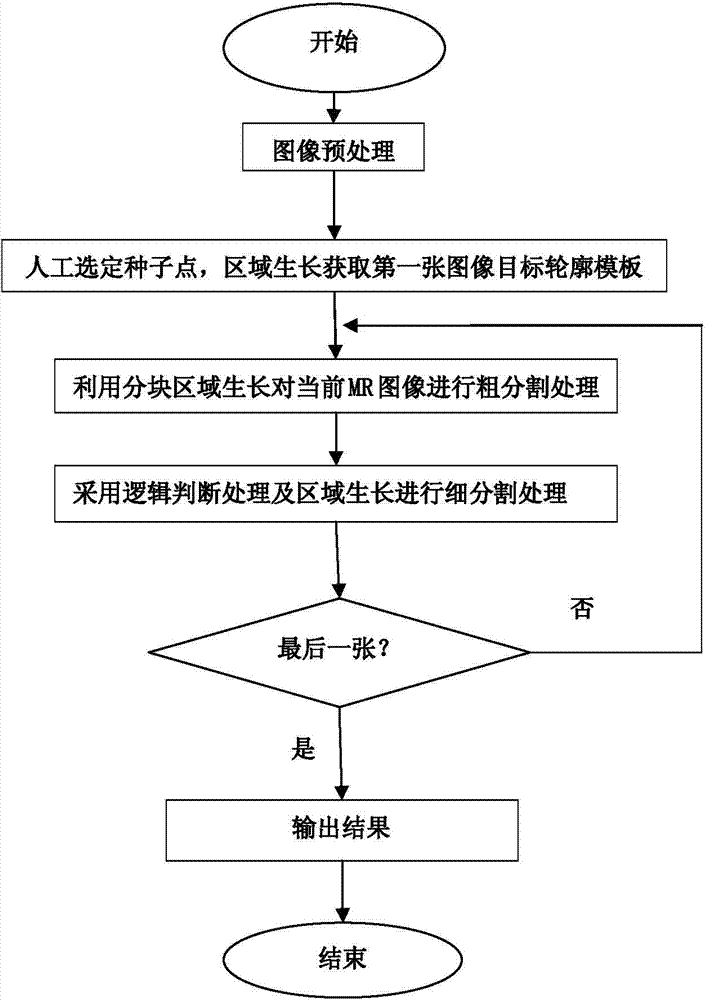Method for partitioning brainstem areas automatically from MR (magnetic resonance) sequence images
An automatic segmentation and image-based technology, applied in image analysis, image data processing, instruments, etc., can solve the problems of inconsistent segmentation effect standards, low segmentation efficiency, and labor and material resources consumption, and achieve standardized segmentation results. The effect of reducing the degree of intervention
- Summary
- Abstract
- Description
- Claims
- Application Information
AI Technical Summary
Problems solved by technology
Method used
Image
Examples
Embodiment Construction
[0020] The present invention will be further elaborated below in conjunction with the accompanying drawings.
[0021] Such as figure 1 As shown, the specific implementation process of the method for automatically segmenting brainstem regions from sequence MR images of the present invention is as follows:
[0022] 1. Neural sequence MR image preprocessing
[0023] The preprocessing is mainly to carry out gray-level clustering processing on all neural sequence MR images, using the method of fuzzy K-means clustering, K is a natural number, clustering the gray-level clustering of all MR images to be processed into 5-level gray-scale images, respectively Represents background, highlighted connective tissue and eyeballs, bones, nervous tissue such as the cerebellum and brainstem, and other tissues.
[0024] The principle of gray-level clustering processing for MR images is: fuzzy cluster analysis is one of the main techniques of unsupervised pattern recognition, which mainly seeks...
PUM
 Login to View More
Login to View More Abstract
Description
Claims
Application Information
 Login to View More
Login to View More - R&D
- Intellectual Property
- Life Sciences
- Materials
- Tech Scout
- Unparalleled Data Quality
- Higher Quality Content
- 60% Fewer Hallucinations
Browse by: Latest US Patents, China's latest patents, Technical Efficacy Thesaurus, Application Domain, Technology Topic, Popular Technical Reports.
© 2025 PatSnap. All rights reserved.Legal|Privacy policy|Modern Slavery Act Transparency Statement|Sitemap|About US| Contact US: help@patsnap.com



